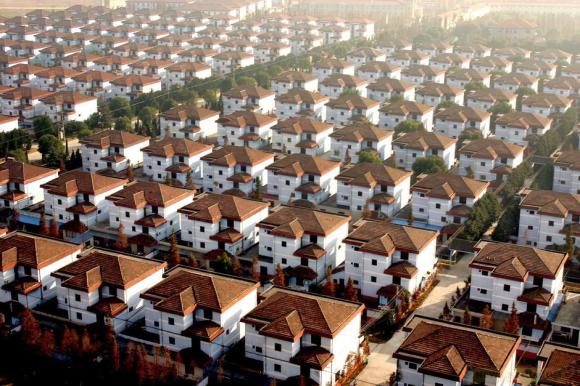
How would you like to receive a villa, cars, health care, education, and other services virtually for free? That’s all part of the deal if you happen to be one of the lucky citizens of Huaxi Village, China.
Huaxi Village (華西村, or 华西村 in simplified Chinese) of Jiangyin City is located near the east coast of China and a slightly northwest of Shanghai. It’s famous for supposedly being the richest agricultural village in all of China, though it wasn’t always that way. All of the approximately 2,000 registered citizens in the village are said to have an annual income of at least 100,000 euros (US$131,830), and are able to enjoy the full perks of living in such a wealthy area. Even Japanese citizens have been taking note of some of the jaw-dropping features of this village–wait till you see the pictures for yourself!
Huaxi Village is today touted as a model of a successful socialist village. Founded in 1961, it began as a poor agricultural village, but gradually transformed into an economic powerhouse thanks to the efforts of the late Wu Renbao, the former secretary of the village’s Communist Party Committee. He oversaw the development of a plan to industrialize the town and create a multi-sector industry company, while also enacting a system of collective farming. Wu eventually put the company on the stock exchange in the late 1990s, and the villagers were made into company stockholders.
▼Wu Renbao, who served as secretary of the Communist Party Committee in Huaxi Village. He passed away in 2013 at the age of 85.
▼Villagers working in the 1970s
The village’s steel, silk, and travel industries in particular have flourished and are what mainly contributed to its astounding 58 billion yuan profit ($9.6 billion) in 2012. Part of the village’s profit gets divided among its stock-holding residents. According to Japanese news-condensing website Naver Matome, a whopping 80% of their gross annual income is deducted for taxes, but in return all registered citizens are provided with a villa, new cars (typically imported luxury models from Volkswagen or Citroën), free health care, free access to education, free use of the city’s private helicopter for sightseeing, free use of facilities and dining expenses in the city’s luxury hotel, and much more! Women over the age of 50 and men over 55 also receive a monthly pension along with supplementary rice and vegetables.
You may have noticed that we keep stressing the term ‘registered citizens’ here. These are the people who are the approximately 2,000 descendants of the village’s original residents during Wu Renbao’s decades of reform and are the only ones who are allowed to own company stock certificates. In addition to these super-privileged citizens, the area also has approximately 20,300 migrant workers and sees even larger number of villagers coming in from neighboring towns.
Let’s now start taking a look at some of the opulence that can be found in Huaxi Village. Approximately 5,000 domestic and international sightseers visit Huaxi each day, and while they must pay an entrance fee to get into the village itself, once inside, all attractions on the premises are free to them for viewing.
Upon entering the village, you’ll be greeted by some of the following sights:
▼”No. 1 Village Under the Sky”
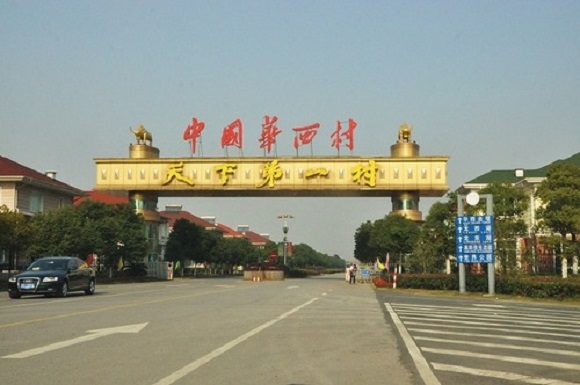
▼Make a mental note of that tall building–we’ll touch on it later.
▼Some of the approximately 70 factories in the village
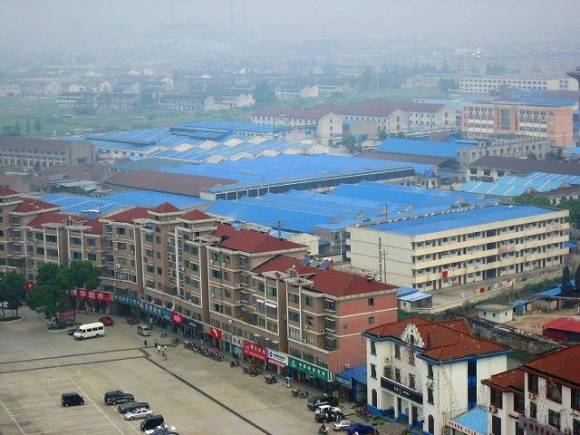
▼What looks like a multi-storied pagoda is actually a shopping center.
▼Rows upon rows of identical, luxurious villas.
▼It’s not unusual for one house to have over 10 rooms.

▼Let’s take a peek inside some of the villas:
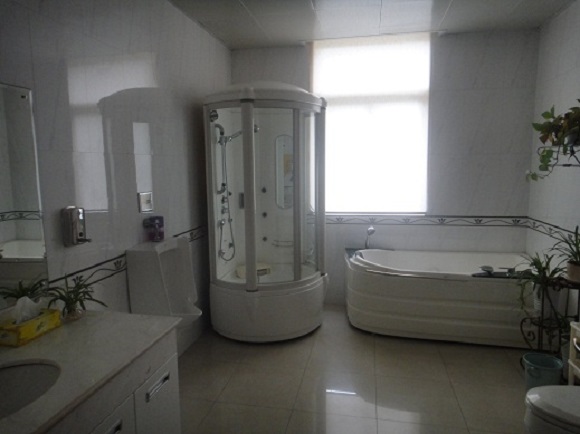
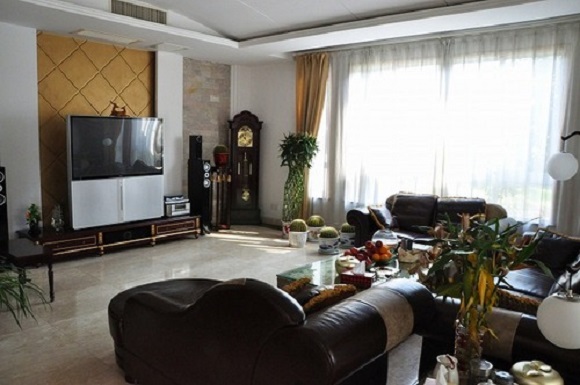
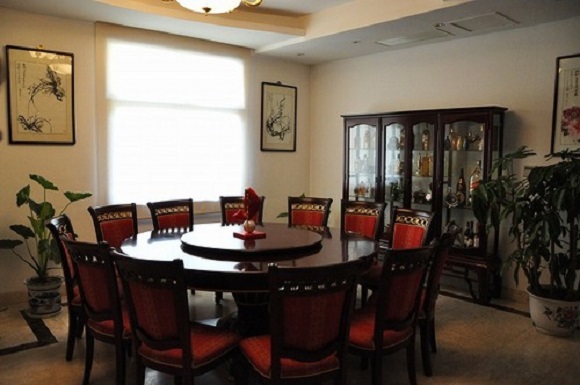
We think we could get used to living in a place like that…and it wouldn’t even take a lot of convincing!
Now, do you remember that tall building from one of the first pictures? It’s actually another one of Huaxi Village’s claims to fame–the Longxi International Hotel, completed in 2011.
The hotel is 74-story-high skyscraper, measuring in at 328 meters (1,076 feet) tall. Compare that to the tallest building in Japan–Osaka’s Abeno Harukas Skyscraper clocks in at ‘only’ 300 meters (984 feet) tall. Apparently, about 200 villagers each contributed vast amounts of money to cover the hotel’s building expenses so that the project didn’t incur any debt (its total costs: over $452 million).
The hotel boasts a revolving restaurant, rooftop pool, shopping mall, movie theater, and spa. If you’re not a registered citizen of the village, ‘economical’ rooms will cost you about $260 per night, while the most expensive ones will set you back a whopping $11,550! If you’d like to see the interiors of those rooms, please click here.
▼The Longxi International Hotel
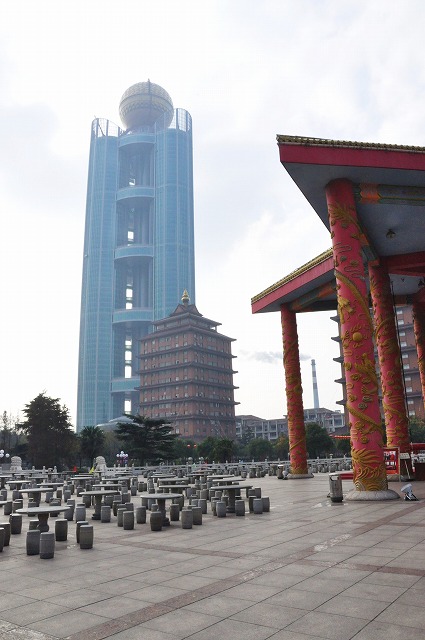
▼The hotel’s walls are sure to remind you of the staggering wealth of the place.

▼The character for ‘gold/money’ written in a number of styles also seems fitting as decoration.
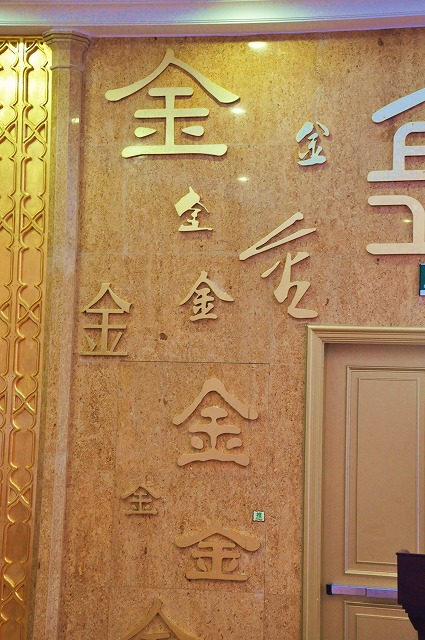
Maybe it’s a nod to its agricultural past, but the village seems to enjoy displaying sculptures of bulls made from various expensive materials within the hotel:
▼The village’s $34.6 million 50th anniversary gift to itself in 2011: A bull made from one ton of gold.

▼Here’s one made from one ton of silver.
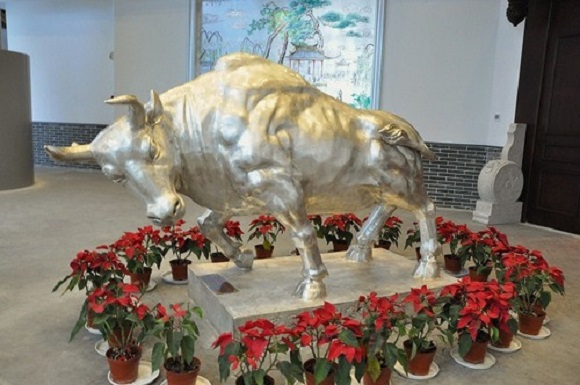
▼One ton of copper…
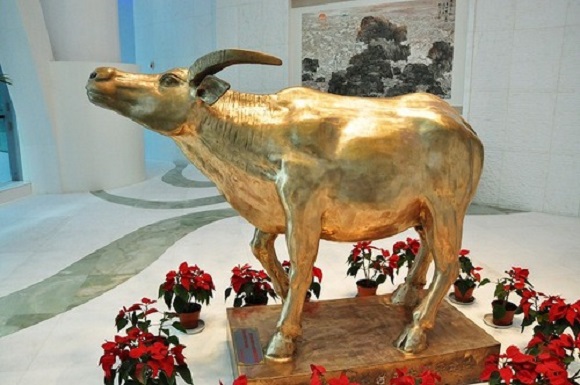
▼One ton of iron…

▼And one ton of tin!
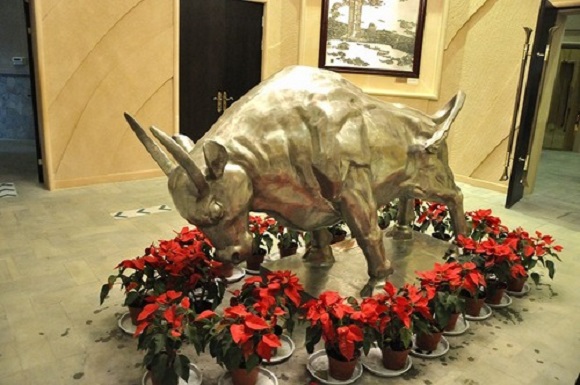
If you ever find yourself bored with all the amenities that the hotel has to offer (though we’re not entirely sure that’s possible…), why not check out some of the village’s other fun attractions? There are even replicas of…
▼The Great Wall of China
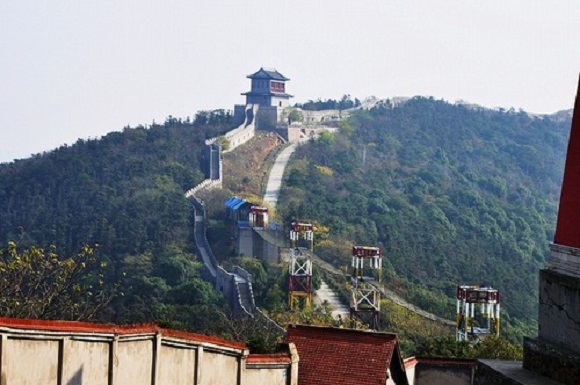
▼…and Tiananmen Square.
▼Oh, and remember that village helicopter? Registered residents can use it for free, but visitors must pay a fee.


After seeing pictures like these, it’s awfully hard to remember that this place is still technically classified as a ‘village.’ Excuse us while we go and try to wrap our minds around that…
Sources: Naver Matome, The Wall Street Journal, Wikipedia

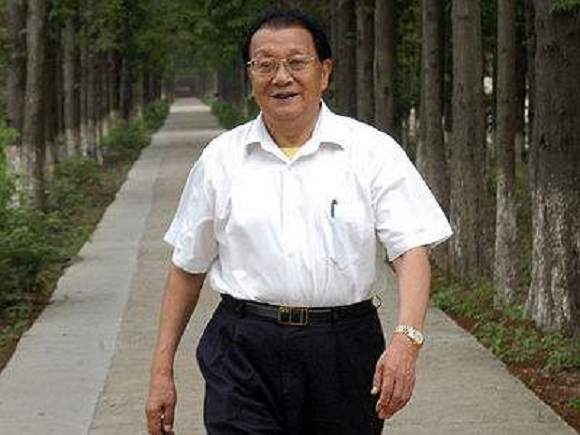
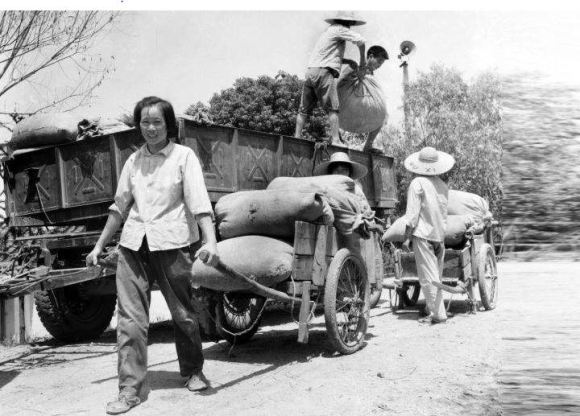

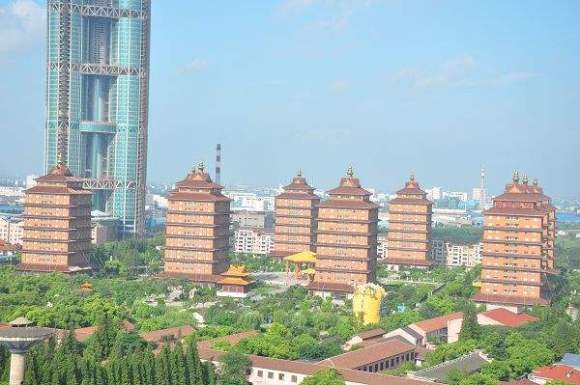

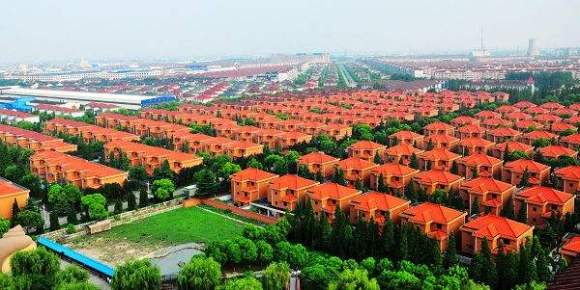
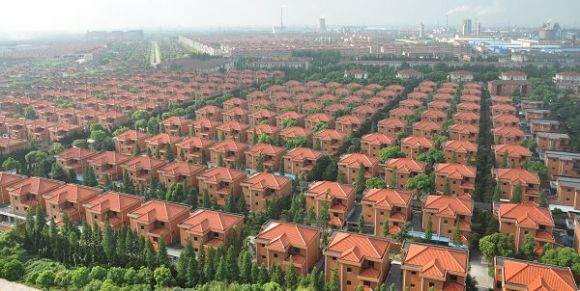
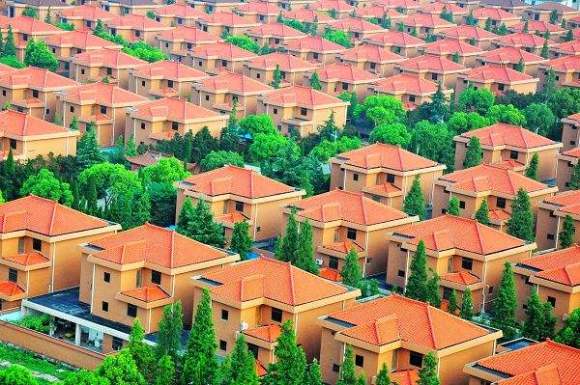
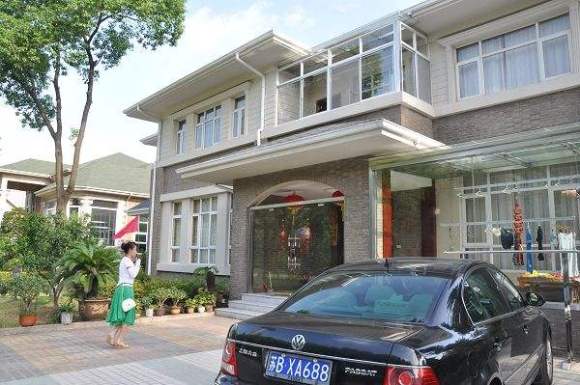
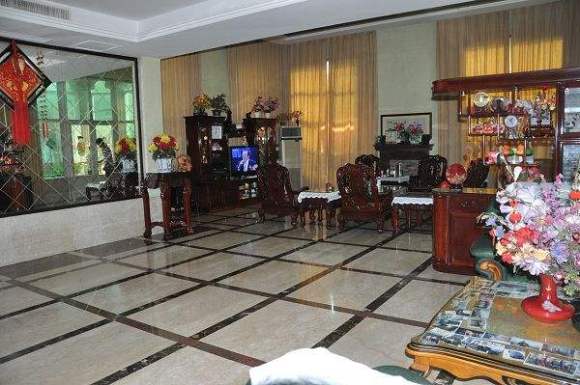

 That time Seiji called JASRAC to ask why he didn’t get paid royalties for his song being on TV
That time Seiji called JASRAC to ask why he didn’t get paid royalties for his song being on TV We revisited Sweets Paradise after a decade to see if Japan’s dessert buffet still delivers
We revisited Sweets Paradise after a decade to see if Japan’s dessert buffet still delivers The best Starbucks Japan Frappuccinos we want to drink again in 2026
The best Starbucks Japan Frappuccinos we want to drink again in 2026 Hayao Miyazaki says Happy New Year to Studio Ghibli fans with new art for Year of the Horse
Hayao Miyazaki says Happy New Year to Studio Ghibli fans with new art for Year of the Horse Starbucks Japan ready to get Year of the Horse started with adorable drinkware and plushies【Pics】
Starbucks Japan ready to get Year of the Horse started with adorable drinkware and plushies【Pics】 That time Seiji called JASRAC to ask why he didn’t get paid royalties for his song being on TV
That time Seiji called JASRAC to ask why he didn’t get paid royalties for his song being on TV We revisited Sweets Paradise after a decade to see if Japan’s dessert buffet still delivers
We revisited Sweets Paradise after a decade to see if Japan’s dessert buffet still delivers The best Starbucks Japan Frappuccinos we want to drink again in 2026
The best Starbucks Japan Frappuccinos we want to drink again in 2026 Hayao Miyazaki says Happy New Year to Studio Ghibli fans with new art for Year of the Horse
Hayao Miyazaki says Happy New Year to Studio Ghibli fans with new art for Year of the Horse Starbucks Japan ready to get Year of the Horse started with adorable drinkware and plushies【Pics】
Starbucks Japan ready to get Year of the Horse started with adorable drinkware and plushies【Pics】 Tokyo’s dedicated Nintendo store finally begins offering its exclusive items online
Tokyo’s dedicated Nintendo store finally begins offering its exclusive items online Mikado Coffee is a 76-year-old coffee chain with a major celebrity connection
Mikado Coffee is a 76-year-old coffee chain with a major celebrity connection Japanese thug wear from Birth Japan perfect for those breaking bad next year
Japanese thug wear from Birth Japan perfect for those breaking bad next year Japanese department store rooftop is a secret oasis where you can escape the crowds in Tokyo
Japanese department store rooftop is a secret oasis where you can escape the crowds in Tokyo 7-Eleven Japan’s ramen-cooking robot whipped us up a bowl of noodles【Taste test】
7-Eleven Japan’s ramen-cooking robot whipped us up a bowl of noodles【Taste test】 Cyberpunk anime meets traditional culture in Ghost in the Shell gold leaf Japanese changing screens
Cyberpunk anime meets traditional culture in Ghost in the Shell gold leaf Japanese changing screens 7 great places to see Mt. Fuji from without having to climb it
7 great places to see Mt. Fuji from without having to climb it Hello Kitty Choco Egg figures are an adorable trip through three periods of Japanese pop culture【Pics】
Hello Kitty Choco Egg figures are an adorable trip through three periods of Japanese pop culture【Pics】 We found possibly the quietest Japanese-style hotel in Tokyo’s bustling Shinjuku district
We found possibly the quietest Japanese-style hotel in Tokyo’s bustling Shinjuku district Japan’s otoshidama tradition of giving kids money at New Year’s gets a social welfare upgrade
Japan’s otoshidama tradition of giving kids money at New Year’s gets a social welfare upgrade Sumo Sanrio! Hello Kitty and pals team up with Japan Sumo Association for new merch【Pics】
Sumo Sanrio! Hello Kitty and pals team up with Japan Sumo Association for new merch【Pics】 More Than a Capsule Stay: Why Solo Travelers Choose “global cabin Yokohama Chinatown”
More Than a Capsule Stay: Why Solo Travelers Choose “global cabin Yokohama Chinatown” Japan’s oldest largetooth sawfish in captivity back on display in Mie Prefecture
Japan’s oldest largetooth sawfish in captivity back on display in Mie Prefecture 7-Eleven Japan starts new temporary luggage storage service in over 300 branches
7-Eleven Japan starts new temporary luggage storage service in over 300 branches Disillusionment at Tsukiji’s tourist-target prices led us to a great ramen restaurant in Tokyo
Disillusionment at Tsukiji’s tourist-target prices led us to a great ramen restaurant in Tokyo Starbucks teams up with 166-year-old Kyoto doll maker for Year of the Horse decorations【Photos】
Starbucks teams up with 166-year-old Kyoto doll maker for Year of the Horse decorations【Photos】 Tokyo considering law requiring more trash cans following litter increase in heavily touristed area
Tokyo considering law requiring more trash cans following litter increase in heavily touristed area Tokyo’s Tsukiji sushi neighborhood asks tour groups to stay away for the rest of the month
Tokyo’s Tsukiji sushi neighborhood asks tour groups to stay away for the rest of the month Tokyo event lets you travel back in time, for free, to celebrate 100 years since Showa era start
Tokyo event lets you travel back in time, for free, to celebrate 100 years since Showa era start Sanrio theme park in Japan announces plans to expand into a Sanrio resort
Sanrio theme park in Japan announces plans to expand into a Sanrio resort Japan may add Japanese language proficiency, lifestyle classes to permanent foreign resident requirements
Japan may add Japanese language proficiency, lifestyle classes to permanent foreign resident requirements Stamina-destroying “Paralysis Noodles” are Tokyo’s newest over-the-top ramen innovation
Stamina-destroying “Paralysis Noodles” are Tokyo’s newest over-the-top ramen innovation Survey asks foreign tourists what bothered them in Japan, more than half gave same answer
Survey asks foreign tourists what bothered them in Japan, more than half gave same answer Japan’s human washing machines will go on sale to general public, demos to be held in Tokyo
Japan’s human washing machines will go on sale to general public, demos to be held in Tokyo Japan’s deadliest food claims more victims, but why do people keep eating it for New Year’s?
Japan’s deadliest food claims more victims, but why do people keep eating it for New Year’s? We deeply regret going into this tunnel on our walk in the mountains of Japan
We deeply regret going into this tunnel on our walk in the mountains of Japan Studio Ghibli releases Kodama forest spirits from Princess Mononoke to light up your home
Studio Ghibli releases Kodama forest spirits from Princess Mononoke to light up your home Major Japanese hotel chain says reservations via overseas booking sites may not be valid
Major Japanese hotel chain says reservations via overseas booking sites may not be valid Put sesame oil in your coffee? Japanese maker says it’s the best way to start your day【Taste test】
Put sesame oil in your coffee? Japanese maker says it’s the best way to start your day【Taste test】 No more using real katana for tourism activities, Japan’s National Police Agency says
No more using real katana for tourism activities, Japan’s National Police Agency says Starbucks Japan reveals new sakura drinkware collection, inspired by evening cherry blossoms
Starbucks Japan reveals new sakura drinkware collection, inspired by evening cherry blossoms Updated cherry blossom forecast shows extra-long sakura season for Japan this year
Updated cherry blossom forecast shows extra-long sakura season for Japan this year Tokyo’s dedicated Nintendo store finally begins offering its exclusive items online
Tokyo’s dedicated Nintendo store finally begins offering its exclusive items online Mikado Coffee is a 76-year-old coffee chain with a major celebrity connection
Mikado Coffee is a 76-year-old coffee chain with a major celebrity connection Japanese thug wear from Birth Japan perfect for those breaking bad next year
Japanese thug wear from Birth Japan perfect for those breaking bad next year Japanese department store rooftop is a secret oasis where you can escape the crowds in Tokyo
Japanese department store rooftop is a secret oasis where you can escape the crowds in Tokyo 7-Eleven Japan’s ramen-cooking robot whipped us up a bowl of noodles【Taste test】
7-Eleven Japan’s ramen-cooking robot whipped us up a bowl of noodles【Taste test】 Senkoji: The Japanese temple that’s more like a theme park to heaven and hell
Senkoji: The Japanese temple that’s more like a theme park to heaven and hell Brand-new Cardcaptor Sakura Cafe opens in Tokyo this week, with Kero-chan calling the shots
Brand-new Cardcaptor Sakura Cafe opens in Tokyo this week, with Kero-chan calling the shots Japan Super Budget Dining – What’s the best way to spend 1,000 yen at beef bowl chain Sukiya?
Japan Super Budget Dining – What’s the best way to spend 1,000 yen at beef bowl chain Sukiya? Eel vendor in Asakusa becomes a hot topic with foreigners on Reddit, but is it any good?
Eel vendor in Asakusa becomes a hot topic with foreigners on Reddit, but is it any good? Take it From a Native! Recipe for Delicious Japanese Curry as Found at Coco Ichiban
Take it From a Native! Recipe for Delicious Japanese Curry as Found at Coco Ichiban Nintendo’s Kirby now delivering orders at Kura Sushi restaurants, but not in Japan
Nintendo’s Kirby now delivering orders at Kura Sushi restaurants, but not in Japan Sumo Sanrio! Hello Kitty and pals team up with Japan Sumo Association for new merch【Pics】
Sumo Sanrio! Hello Kitty and pals team up with Japan Sumo Association for new merch【Pics】 Cyberpunk anime meets traditional culture in Ghost in the Shell gold leaf Japanese changing screens
Cyberpunk anime meets traditional culture in Ghost in the Shell gold leaf Japanese changing screens
Leave a Reply